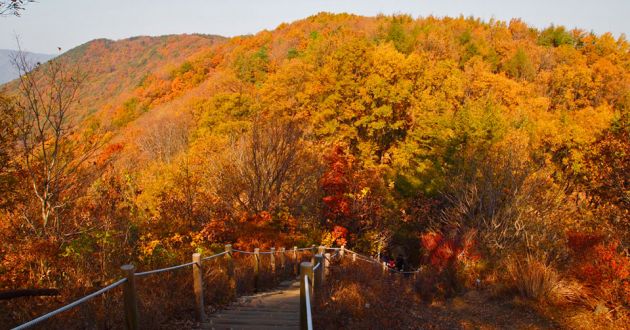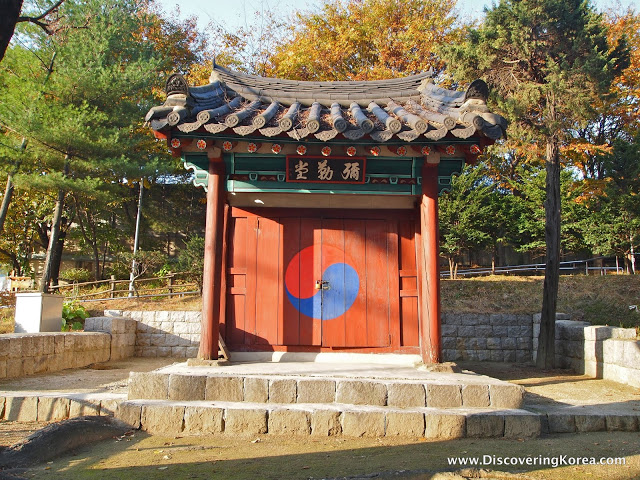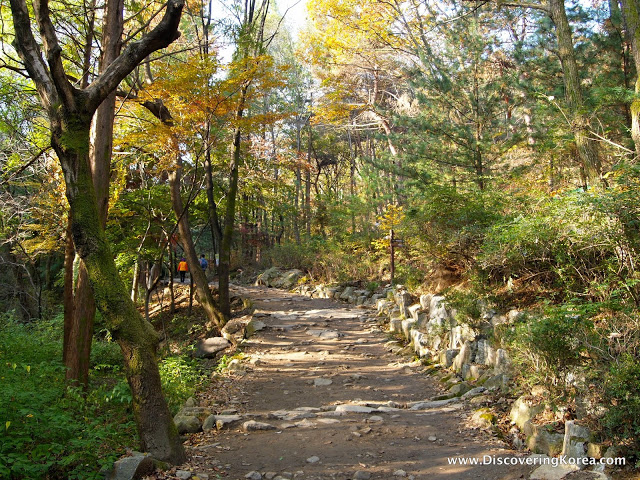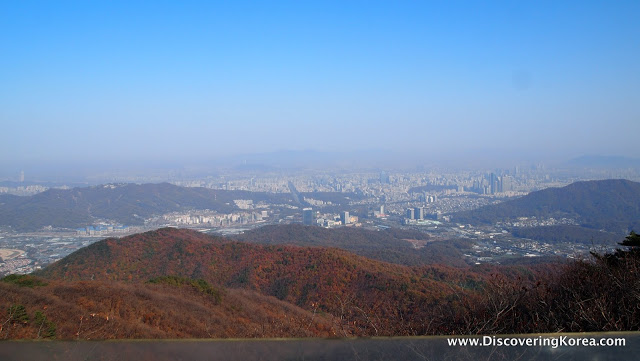Last week we took a ride on Seoul subway’s newest line, the Shin Bundang Line (신분당선). This week we’ll take advantage of the Line’s convenient access to one of southern Seoul’s most popular hiking spots.
Straddling the boundaries of Seoul, Gyeonggi Province, and three satellite cities, Cheonggyesan mountain (청계산) is considered one of greater Seoul’s guardian mountains.

Although it’s just 13 meters shorter than nearby Gwanaksan mountain (관악산), the peak’s trails are noticeably less difficult than Seoul’s other major mountains. So for this post, let’s try hiking Cheonggyesan mountain in Gyeonggi Province!
One of Cheonggyesan mountain‘s most popular trails begins a few hundred meters from Cheonggyesan Ipgu Station (청계산입구역) exit 2, where the telltale sign of any Korean mountain – stores selling premium-grade hiking gear – start to appear. A tunnel filled with ladies selling fresh produce leads to the trailhead.

Although Cheonggyesan mountain may feel somewhat tame to the active hiker, there are a number of interesting sites on and around the mountain.
One of the most popular is Cheonggyesa temple (청계사), a Buddhist temple located close to the main trail at the mountain’s base. Originally built during the Silla Dynasty, the main attractions are the colorful Hall of Paradise and a massive stone standing Buddha.
Another Buddhist monument is located prior to the tunnel. Standing at a busy intersection is a stone pagoda and a small wooden structure that holds a standing stone Buddha.
The modest Mireukdang, or Hall of Maitreya, holds a 225-centimeter tall Buddha, an uncommonly large statue that’s been designated Seoul Tangible Cultural Property No. 93.
Presumably the site of a former temple, the statue is thought to produce miracles, and local residents perform a sacrificial rite there annually.

Another place of interest is located near the summit. Just off the main trail is a solemn memorial to the 53 airmen, training officers and trainees who died there in 1982 when their plane struck the mountain in dense fog. Hikers frequently stop by to place fruit or flowers in tribute.
Although Cheonggyesan’s peak tops off at 618 meters, the area is occupied by the military and off-limits to civilians. Hikers must make due with Maebong, an adjacent peak, at 582.5 meters.

And just as you’d expect, great views of Seoul to the north and Gwacheon’s horse track to the west can be enjoyed. It was a little hazy on my visit, but I could definitely make out Namsan mountain and N Seoul Tower.
Surprisingly, the typically imposing landmarks looked almost toy-like in a distance. Although I was a week or two too late to see peak autumn foliage, the hillsides covered in rust-colored hues were a lovely consolation.
I’ll wrap this post up with two final tips:
First, especially at this time of the year, arrive early. Even on weekdays, a long queue of hikers will arrive starting at about 10 am. If you start at 09:00 or earlier, you shouldn’t have any trouble ascending at your own pace.

Second, after your descent, consider checking out the rows of greenhouses that line the street to Yangjae. Dozens of hot houses produce beautiful home and garden plants throughout most of the year.
Right now is the best time to see beautiful chrysanthemums in all sizes and colors. Why not consider visiting the nearby Yangjae Flower Market (양재동꽃시장) ?
For Your Information…
| Open: | 24 hours |
| Admission Price: | Free |
| Address: | Gyeonggi Province Uiwang-si Cheonggye-dong San |
| Directions: | Cheonggyesan Ipgu Station (#D10) on the Sin Bundang Line, Exit 2 |
| Phone: | 02-2155-6870 |
| Website: |
About Matt Kelley
Matt Kelly is native of the US Pacific Northwest and is half-Korean by ethnicity. He lived in Korea for five years and has written hundreds of travel guides for Wallpaper, TimeOut, the Boston Globe and Seoul Magazine and was a host for several different variety shows on Korean radio and television.
